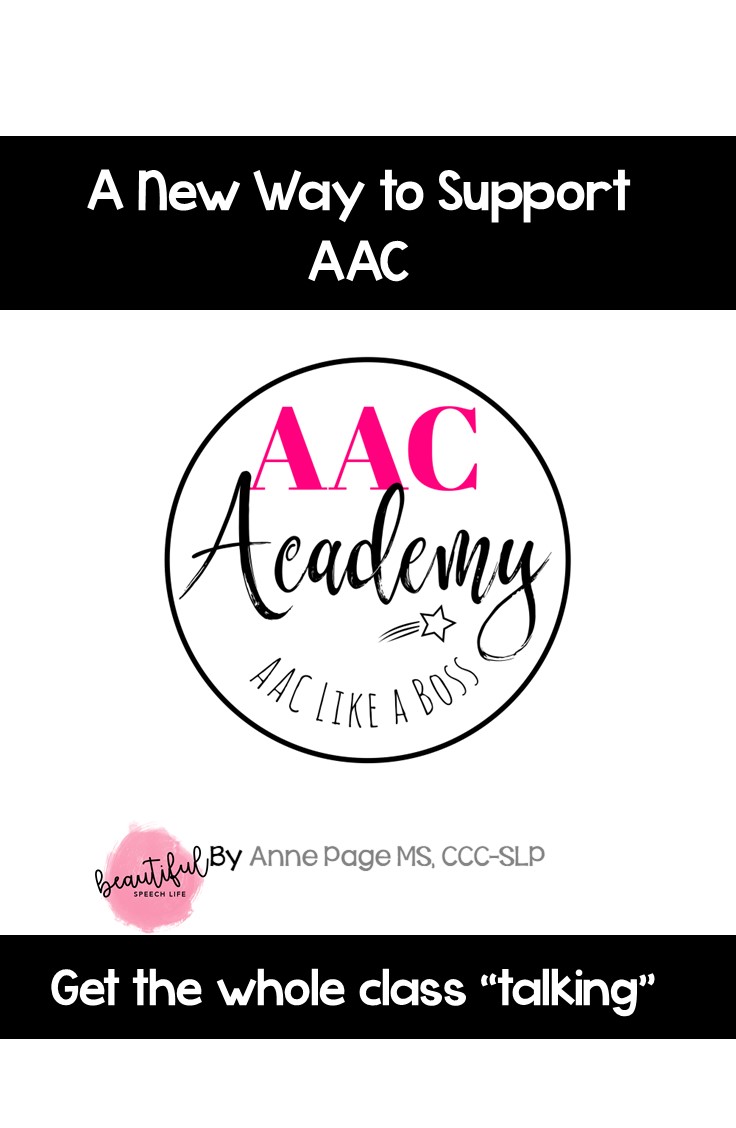I learned so much at the ASHA convention in Los Angeles that I just had to share it with you. After attending outstanding presentations on AAC, I have to let you in on some of my biggest aha moments and takeaways. These five free AAC Resources will make your SLP life easier.
1. AAC for students with visual impairments
This year I’m working with several students who not only have complex communication needs but they also have a visual impairment. These are the kids that I think about a lot. Trying to strategize and come up with some type of a communication system for them is really challenging.
Laura Stone gave an amazing presentation that included resources for purchasing tactile communication systems using Core Vocabulary and suggestions for how to create your own.
STACS: Standardized Tactile Augmentative Communication Symbols Kit is available online
Texas School for the Blind & Visually Impaired has standardized a Tactile System (FREE guide) http://www.tsbvi.edu/images/attachments/Tactile-Symbol-List1.pdf
And you can make your own symbols too using corrugated plastic or cardboard. I’ll be diving deeper into this subject in an upcoming interview with Laura.
2. Low-tech AAC Gems from Gail Van Tatenhove
” Low-tech doesn’t scare the crap out of people.”
” Low-tech is a rich environment in which you can do language.”
” You can have more than one motor plan.”
” Low-tech can temporarily reduce the cognitive load.”
” Look at access, intentionality, and motivation.”
Learn more wisdom from Gail Van Tatenhove, the Queen of Core at https://gvantatenhove.wordpress.com/

Kristen from The Daily Dose of Speech and I with Gail Van Tatehove
3, 4 & 5. Classroom-wide Core Vocabulary from Project Core
Project Core is a Stepping Up Technology Implementation Grant, directed by the Center for Disability and Literacy Studies at UNC Chapel Hill. Here are a few of the highlights.
- Teach teachers and classroom staff how to teach AAC (this is huge and something I’m always working on)
- “Encourage communication without requiring it.” ~Karen Erickson
- ” It’s not a model, if the child doesn’t see you do it.” ~Karen Erickson
- Make sure there’s a worthwhile topic to communicate about.
- Project Core uses Communication Matrix (which I’ve been using for the past 3 or 4 years) This is a FREE assessment tool that I find invaluable. I’ve included a link on my Resources
- Project Core has free professional development modules http://www.project-core.com/professional-development-modules/
- And FREE posters http://www.project-core.com/teaching-core-vocabulary-posters/
I hope you can use these AAC resources. I know it can be a confusing area with a lot of different resources, devices and vocabulary sets. We just have to keep ourselves informed, reach out to other SLPs, look at evidence and use our best clinical judgement.
I think one thing that all the AAC experts agree on is the importance of Aided Language Stimulation or Modeling.
So, let’s hold that point,



 Hey there I’m Anne Page. I help heart centered SLPs and educators put the fun in functional communication.
Hey there I’m Anne Page. I help heart centered SLPs and educators put the fun in functional communication. 